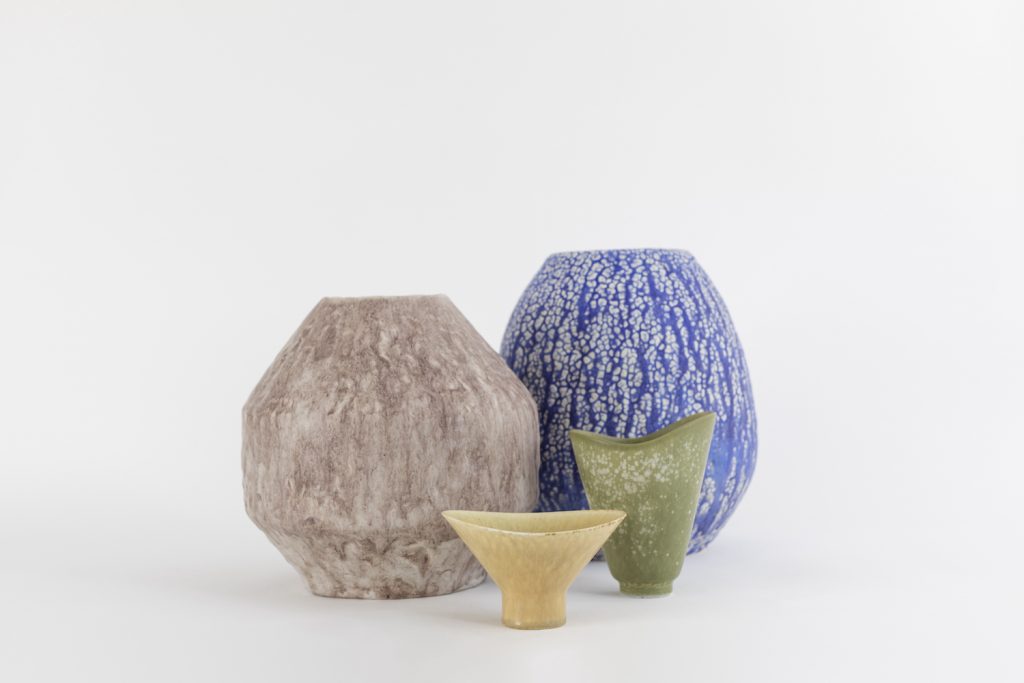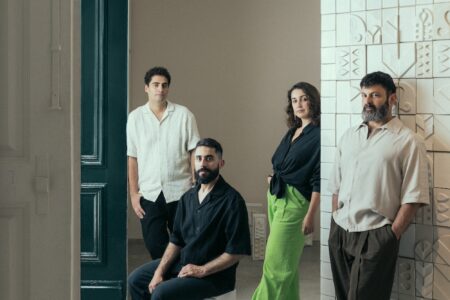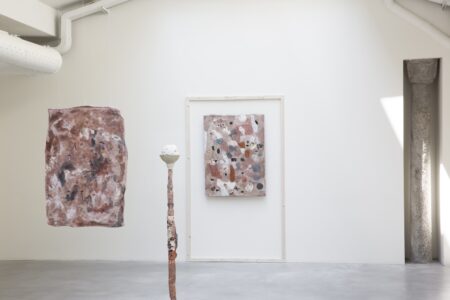To Search, Find and Retain
Anders Herwald Ruhwald on what drew him to the work of Swedish modernist ceramicist, Carl-Harry Stålhane, and how his current exhibition, “Ruhwald vs. Stålhane”, explores this relationship through clay and glazing. The exhibition, curated by Love Jönsson, is on view at the Rian Design Museum through April 24th.
To me, ceramics is a language. It is a way of bringing meaning into the world through form and material. It is a methodology.
I have been making ceramics for more than 30 years. I began when I was 15, and since then, the opportunities presented by clay, glaze and firings have been an important aspect of my life. It is my primary language, as an artist and as a person.
Ceramics has taken me to other countries, built a global circle of friends and given me an anchor in life that is not attached to a place but to a material. I feel that I know people through the ceramics they create.
When I first saw one of Carl-Harry Stålhane’s vases from the 1950s in the collection of the Cranbrook Art Museum in the United States, I experienced a deep sense of kinship. I was drawn to it and wanted to understand it better. It made sense. It felt right and well-considered. And the glaze was infinitely beautiful.
I felt the urge to have some of his pieces close by. So I spent years visiting online auction houses in the hope of securing some, and by now, my collection numbers more than 20 pieces.
Generally speaking, Stålhane’s works from the early post-war period are about two things: glaze and form. The matte, flowing glazes are like entering a dream world. Every single object has a wealth of colour shades and individuality, so even when the individual vases and glazes are the same, no two are alike.
Not that any one of them is more perfect than any other, but within a set of strict parameters there is room for tiny variations, and these variations contain infinite depth.
The interplay of form and glaze, designed by Stålhane and produced by skilled production throwers and glaze chemists, is one of the finest examples of how craft – even when it is put into production – allows for immersion into the material. Here, the subtle variations of ceramics are manifested through the glaze, the firing or even the thrower’s mood. Overall, Stålhane’s art becomes a manifestation of the possibilities of ceramics; not just as a reflection of an individual artist’s ability but in a true interplay of human beings, materials, circumstances and ambition. They are monuments to a fleeting interconnectedness.
They require no words. My eye is at rest with them. In my hand, they feel like a caress. They are exceptionally satisfying. And I never tire of looking at them.
They make me want go full nerd, delving even deeper into the canyon of glaze and losing myself in its nooks and corners. Glazes are a way for me to imbue my works with meaning. They clarify the object and anchor it materially. Glaze roots the object in the cultural and historical frame of reference of ceramics. It is a hook that connects the object to the sum of experience each of carries within.
However, I do not seek Stålhane’s taut perfection. My engagement with clay and glaze is more a study of what happens in the interaction of the material, my ideas and the ability of my hands. I rarely use tools these days. It is all about my hands seeking and the material offering resistance. I continuously search for new expressions with glazes.
That is the basis of my series Glasur Stykker (Glaze Pieces), which I have been working on for about five years, and which so far features about one hundred individual objects. All the objects take the form of double-wall dishes, bowls or jars. Sturdy objects that almost exaggerate their ceramic appearance. Thick, heavy and asymmetric. Objects that are almost like shadows of their functional relatives.
In these pieces, the glaze can display its full range. They demonstrate how glaze breaks on sharp edges, how it drips and how it draws out the oxides and stains that provide colour and at times make it opaque. How it bubbles, creeps, melts, flows and runs. Whether it flows smoothly or settles plumply on the body, blurring the details of the surface.
This is enabled by the form of the glaze pierces and highlighted by their uneven surfaces and irregular contours.
Thus, each glaze piece is an image of a single glaze or a combination of glazes. An insight into how glazes behave at a certain temperature in the kiln. I can sense how they melt by looking at them. They are a sort of sketch that suggests and clarifies. They serve as a counterpoint. A continuous series that is comparable to the traditional role of drawing in art and design. A way for me to search, find and remember.
Through them, I learn about glaze and find new paths. That is why no two glaze pieces are alike or have the same glaze combinations. They are part of an investigation, not an end in themselves. That is also why some of them are almost bad and difficult to love. The glaze pieces do not relate directly to my other works or my exhibition practice in general. They belong in a different object category.
The first time I presented pieces from the series was at Volume Gallery in Chicago, and the chosen title, Glasur Stykker, thus also served as a way to explain them in an international context. It suggested their roots in a Danish ceramics tradition and contained a reference to Niels Hansen Jacobsen, Thorvald Bindesbøll, Gertrud Vasegaard and others, all the way up to the generations just before my own, including Bente Skjøttgaard and Morten Løbner Espersen. It was a way for me to point to my own origins and its impact on my methodology in the American context where I live today.
In the other part of my work, I think in spatial terms and develop my objects with a thought for the context they are a part of. It is not just about the object in itself but also about where it is and what it is surrounded by. These objects are relational, they relate to the world around them and attempt to create a space in between the utilitarian and the sculptural. A place where objects speak and relate to an actual space and thus approach the familiar and mundane. That is also why I sometimes construct entire installations, while at other times, I use the spatial setting and its history as a counterpoint to my art. The material presence of the sculptures is what carries their encounter with the audience.
By contrast, the glaze pieces are not about anything other than what they are. There is no hidden metaphor there. They represent possibilities that might be pursued further, if I choose to do so. That is the role they play in my studio. They are an important part of my process.
And inside them lurks the ghost of Stålhane’s taut forms and perfect glazes from the 1950s. I think of Stålhane’s objects and dream of being able to create something similar. Stålhane’s objects from the 1950s are a sort of gestalt. A pinnacle of form and materials that were of their time. My glaze pieces are of a different world, they are not necessarily an end in themselves. They are steps that I take on a path, an experience and a way to acquire the possible within the world that I have chosen to explore.
Translated from Danish by Dorte Silver.
Ruhwald vs Stålhane is onview at the Rian Design Museum, Falkenberg Sweden, until April 24th and will then move on to Rörstrands Museum, Lindkjöping, Sweden, From August 19th to October 23rdAll Photos by Clare Gatto, Copyright Rian Design Museum and Anders Ruhwald
www.andersruhwald.com
@andersruhwald
www.rian.se
@riandesignmuseum












